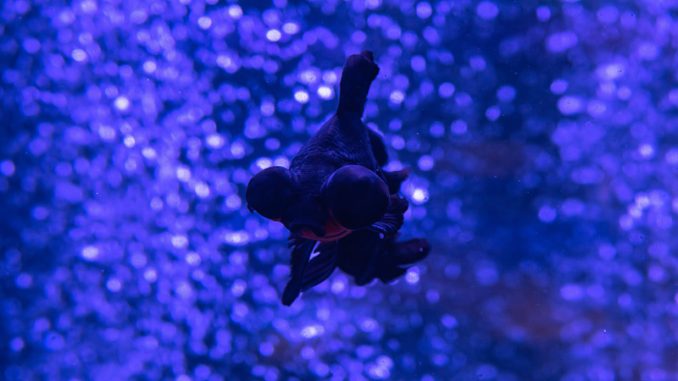
The telescope goldfish is a freshwater fish species that can also tolerate brackish water. They are known scientifically as Carassius auratus and closely resemble the common goldfish.
These fish have large protruding eyes that extend out of the fish’s head. Young telescope goldfish are black or brown in color and only turn red, white, or orange once the fish reach full maturity. Juvenile fish are a dark color to offer them protection and camouflage against potential predators.
Aquarists looking for quirky-looking fish with a calm personality will benefit from introducing the telescope goldfish into a freshwater tank. They are suitable for beginner fishkeepers and aquarists looking for low-maintenance fish.
TABLE OF CONTENTS
Telescope Goldfish Facts & Overview
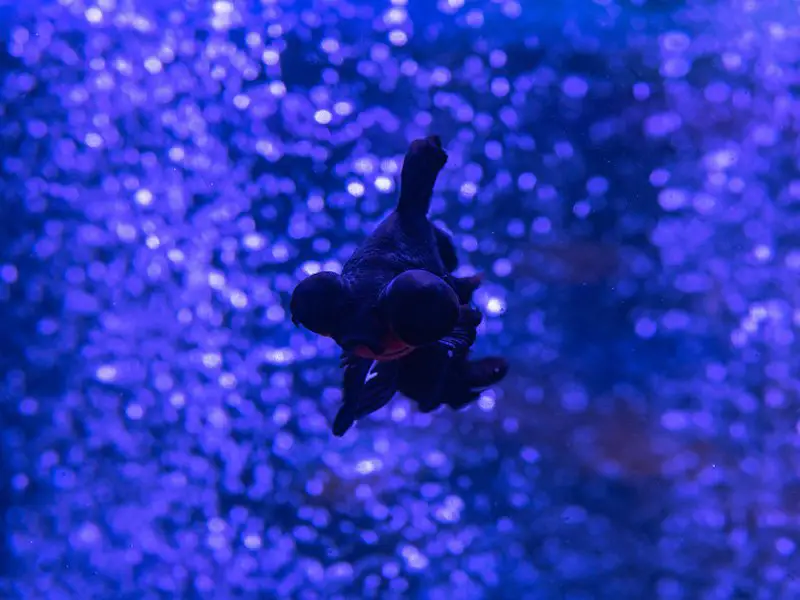
| Category | Rating |
| Care Level: | Easy |
| Temperament: | Calm |
| Color: | A combination of red, orange, black, brown, and white |
| Lifespan: | 6–25 years |
| Size: | ~4 to 10 inches long |
| Diet: | Omnivores |
| Family: | Minnows and carps |
| Minimum Tank Size: | 20-gallons |
| Tank Setup: | Freshwater, plants, caves |
| Compatibility: | Calm fish with a similar temperament to the telescope goldfish |
Telescope goldfish and the regular household goldfish share the scientific name Carassius auratus, but the telescope goldfish looks peculiar compared to its goldfish cousins. However, they share similar care requirements with most types of goldfish.
Goldfish are part of the Cyprinidae family, which is also known as the minnows and carps family of fish. Barbs, carps, minnows, and barbels are all part of the Cyprinidae family.
Telescope goldfish are found all over China. Stagnant and slow-flowing water that is slightly murky is the best natural habitat for telescope goldfish. Fishkeepers looking to keep these fish in a home aquarium should ensure the tank setup resembles the goldfish’s natural habitat.
Healthy telescope goldfish have a life expectancy of over 20 years. Water parameters, tank setup, accessories, choice of tankmates, and aquarium plants all have an impact on the fish’s life expectancy. Fish that are subjected to physical or emotional stress will not grow to their full potential.
Pet stores sell telescope goldfish for between $14.90 and $25. Some pet stores will deliver the fish for an additional cost. Finding healthy telescope goldfish in pet stores is easy, and most stores will have the fish in-store or have the ability to order the fish.
Appearance & Behavior
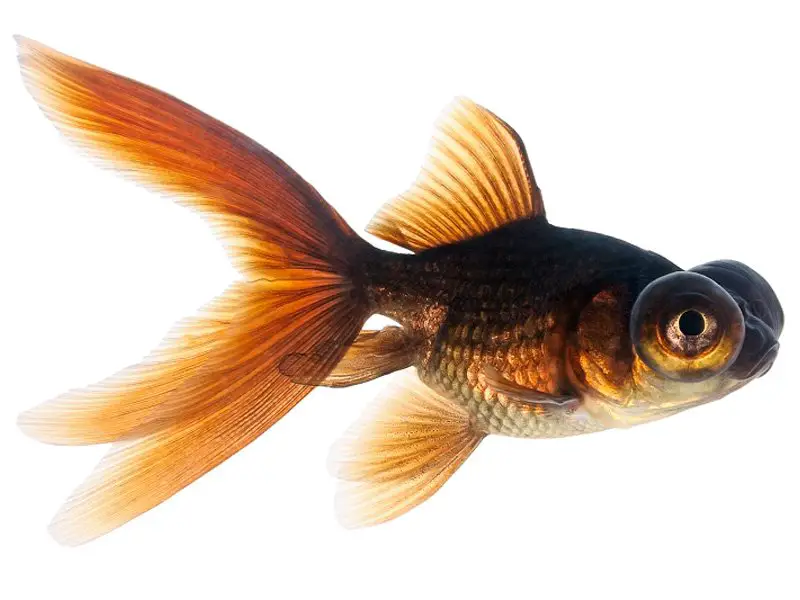
Telescope goldfish come in a variety of patterns and are either orange, red, black, white, brown, or a combination of colors. Immature fish are dark brown or black in color and only lighten and display patterns as they mature. These fish will have blotches of color dotted around their body rather than displaying a uniform pattern.
The telescope goldfish has two distinct features that set it apart from the household goldfish and fancy goldfish. The first striking feature is the fish’s big eyes that look like two telescopes attached to its head. The telescope goldfish also has a long tail that fans out and flows in the water.
Male fish are smaller than their female counterparts and grow up to five inches long. Male telescope goldfish have thin bodies and a narrow concave vent, making them more streamlined than females. Female telescope goldfish have round bodies and look stocky next to male fish. Females can grow up to eight inches long.
Poor health and sexual maturity can cause the fish’s appearance to change. Sick fish will change color or develop lumps, holes, or rashes that are uncommon for the species.
Male fish that are ready to breed develop white spots on their fins and gills. Female fish that are ready to breed will look plump. Telescope goldfish that show physical signs of sexual maturity are easy to breed.
Typical Behavior
Telescope goldfish are social fish that will scavenge leftover food in the tank. These peaceful fish are suitable for a community tank.
Telescope goldfish fish are friendly and do not have territorial or aggressive tendencies. Stressed fish will dart around the tank or crash into plants and accessories. Changes in goldfish swimming habits indicate illness or distress.
These fish swim all over the tank. Goldfish rarely hover in one place or gather at the bottom of the tank. They will hide amongst plants and accessories when the fish feels threatened.
Telescope goldfish are active during the day and rest at night. They will rest during the day. Resting fish are still and hover near the bottom of the tank.
Telescope Goldfish Care
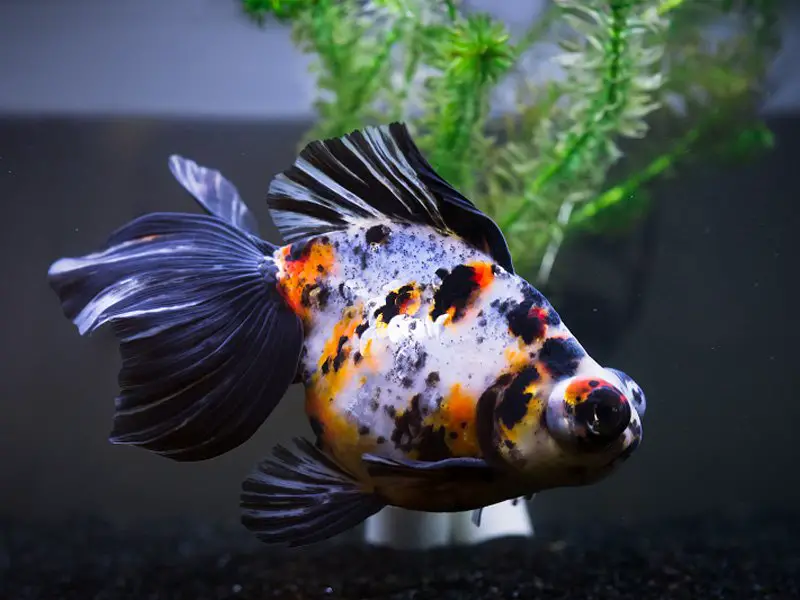
Telescope goldfish are easy to care for. These fish require still or slow-moving water similar to their natural habitat. They will benefit from live plants and decorations as these accessories provide the fish with plenty of hiding spaces.
Feed telescope goldfish a combination of fresh live food, frozen food, and fish food flakes. Aquarists must stick to a regular feeding schedule. Telescope goldfish should only eat enough food that can be consumed in one minute, twice daily.
Inspecting the fish regularly for physical changes will help identify disease and infection early on. Telescope goldfish are prone to common aquarium diseases, but problems are easy to prevent with regular water changes and good hygiene.
Habitat and Tank Requirements
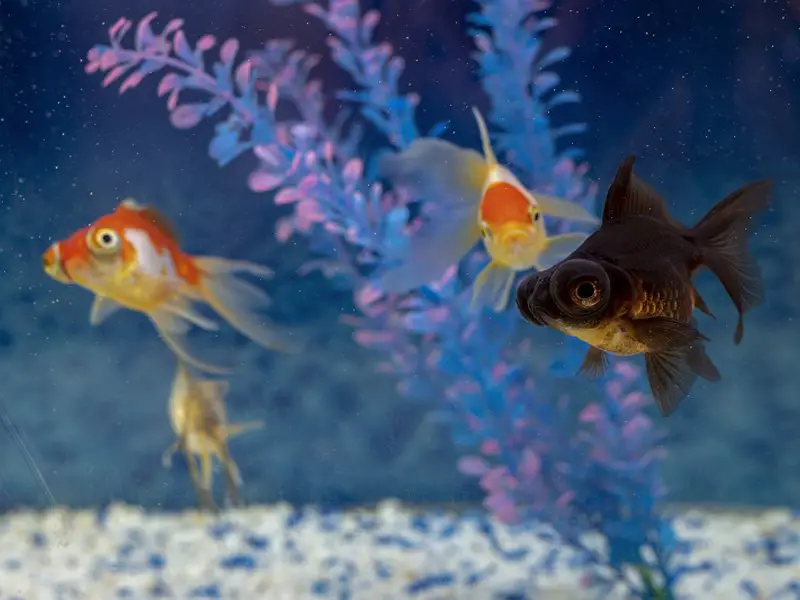
Telescope goldfish live in slow-moving and stagnant water in the wild. Ensuring that the fish’s tank conditions closely resemble the goldfish’s natural habitat is vital. Think about what decorations, plants, and water parameters the fish need before setting up a telescope goldfish tank. The following freshwater plants are native to the telescope goldfish’s natural habitat:
- Waterwheel plant – A flowering plant in the Droseraceae family. This plant is invasive and grows quickly.
- Victoria water lily – Grow up to three meters wide. This flowering plant produces white flowers.
- Lotus blossom – Also known as Indian lotus. The lotus blossom plant produces soft pink flowers with a yellow center.
The above plants aren’t usually grown in freshwater aquariums. Java fern, anubias, crypts, Amazon sword, and Java moss are more common plants for telescope goldfish tanks. Keeping aquarium plants in a telescope goldfish tank provides the fish with hiding places and protection.
Aquascaping the tank is vital. Think about factors like how much room the fish have to swim in the tank and whether the plants are invasive before choosing plants for a telescope goldfish tank.
Tank Conditions
Telescope goldfish have specific tank requirements. These easy-going fish are low-maintenance and fun as long as their tank conditions stay consistent.
Use the following information to help you set up a telescope goldfish tank:
Water type: Telescope goldfish are freshwater fish. Leave tap water in a tub for a few days before using the water for a freshwater aquarium. Fishkeepers can add a dechlorinating solution to tap water when water changes need to be performed quickly.
Tank size: Provide telescope goldfish with ample tank space. A 30-gallon fish tank or larger is appropriate for telescope goldfish.
Desired water temperature: Telescope goldfish thrive when the water temperature stays between 65º and 72º Fahrenheit. Ensure the temperature in the tank stays consistent. Temperature fluctuations will stress out the fish and reduce their life expectancy.
Substrate: Medium to large-sized gravel is the ideal substrate for telescope goldfish tanks. The larger the substrate grains, the better. Telescope goldfish will ingest fine sand and small gravel, causing serious health issues for the fish over time.
Plants: Java fern, anubias, crypts, Amazon sword, and Java moss are appropriate plants for a telescope goldfish tank.
Decorations: Decorate telescope goldfish tanks with driftwood, rocks, bridges, caves, and castles. These accessories provide the fish with extra hiding places.
Water pH level: Keep the water pH levels between 7.0 to 8.4.
Bubblers and filters: Telescope goldfish are weak swimmers. Adding water bubblers will make it difficult for the fish to swim comfortably in the tank. Installing a water filter will keep the tank clean and hygienic.
Tank Mates
Telescope goldfish are social fish. They are ideal for community fish tanks and integrate easily into an existing tank.
Pair telescope goldfish with the following suitable tank mates:
- Hillstream loach
- Brochis multiradiatus
- Dojo loach
- Bristlenose pleco
- Rubber nose pleco
- White Cloud Mountain minnows
- Ricefish
- Hoplo Catfish
Avoid pairing telescope goldfish fish with aggressive fish species. Cichlids, oscar fish, and tiger barbs are aggressive freshwater fish that should not share a tank with telescope goldfish.
Disease
Telescope goldfish are prone to disease and infections. Most conditions occur due to poor tank hygiene. Here is a list of common goldfish diseases:
- Ich – Also known as white-spot disease. Ich occurs when the fish is stressed or run down.
- Swim bladder disease – Overeating will cause swim bladder disease. Swim bladder disease causes swelling and balance problems.
- Fin rot – Bacteria and poor water quality cause fin rot. Treat the water and perform 25% water changes weekly to treat the sick fish.
- Fungal infections – Fungal growth is caused by stress and a poor immune system. Fish fungus is a common issue that affects aquarium fish.
Maintaining a hygienic tank and ensuring that the fish do not overeat will prevent health complications. Some diseases and infections are easy to treat with frequent water changes, while others need antibiotic treatment.
Diet and Feeding
Telescope goldfish scavenge for vegetable matter, insects, and small crustaceans in the wild. Feed the goldfish a balance of live food and fish flakes in a home aquarium.
Freeze-dried or live bloodworms and larvae are great sources of protein. Goldfish need to eat protein twice per week to stay strong and healthy. Telescope goldfish should eat fish food pellets, and fish flakes on a daily basis.
Overfeeding telescope goldfish can cause serious health conditions. Give the fish enough food to consume in a minute. Mealtimes that last longer than a minute will cause the fish to eat more than the telescope goldfish need, causing constipation and other health issues.
Breeding
Telescope goldfish are easy to breed. They spawn readily and are scattered egg breeders. Beginner fishkeepers can breed telescope goldfish easily, and the fry will hatch within a week.
Set up a separate breeding tank to give the telescope goldfish the best chance to breed successfully. Decorate the breeding tank with plants, hiding spaces, and decorations, and place the breeding tank in a quiet room to encourage spawning.
Male telescope goldfish will chase the female fish around the tank. This behavior can go on for several days. Once the eggs are laid and fertilized, the adult fish should be moved back into the community tank.
Telescope goldfish will only breed in a spacious tank. The breeding tank needs to hold at least 20 gallons of water or more to be comfortable for the spawning fish.
Keeping fry in a breeding box is a cost-effective way of keeping them safe and away from adult fish. Feed the fry baby brine shrimp or grind flake food into a fine powder.
Should You Get a Telescope Goldfish for Your Aquarium?
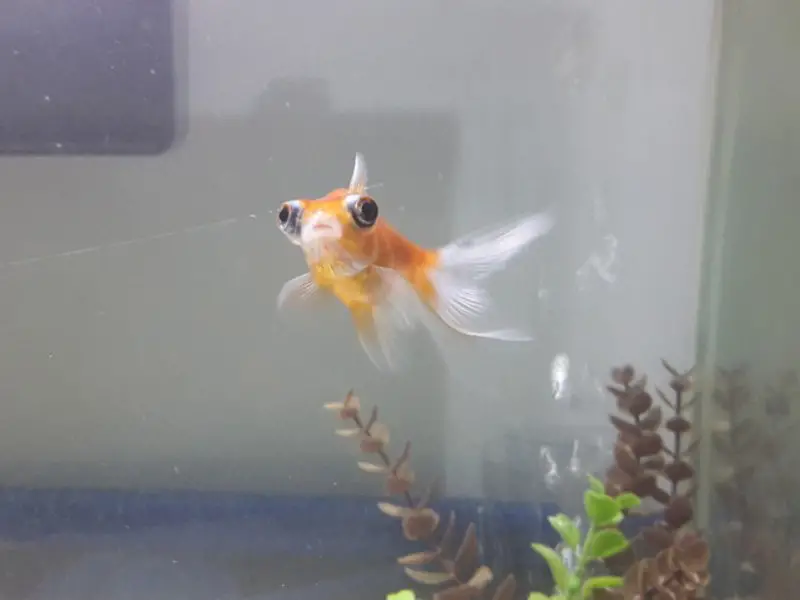
Telescope goldfish are calm and easy to care for. They are good fish for beginner and experienced aquarists that are looking for low-maintenance fish. These fish breed readily and are fun to watch in an aquarium setting.
Telescope goldfish fish have specific yet flexible tank requirements. As long as the water parameters and decorations are in line with the fish’s needs, the goldfish will thrive and live a long life. These quirky fish make great tank companions and are ideal for a community freshwater tank.


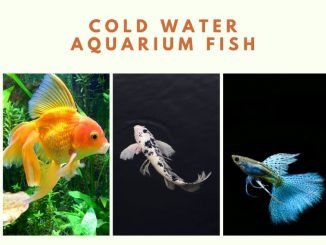

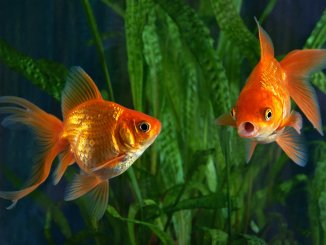

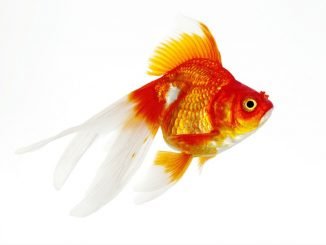
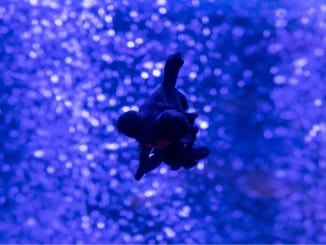
Be the first to comment